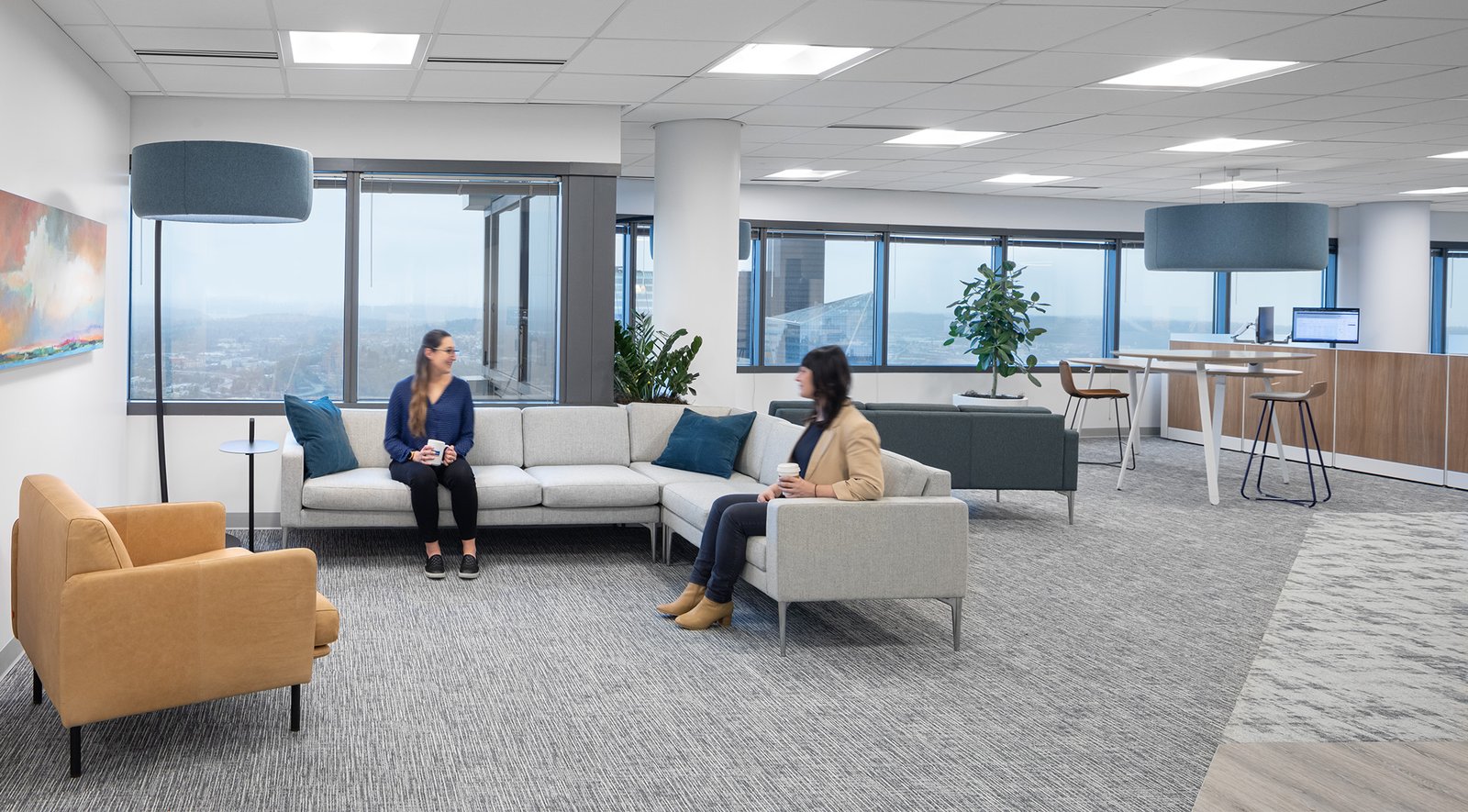Corporate interior design ideas to support today's workforce

In a new article from IFMA’s Facility Management Journal, Senior Principal of Design Aimee Collins shares how companies can create home-like offices for the modern employee experience.
Employees have grown used to the flexibility and comforts of their home set ups. Now that half the global workforce is back in the office four or more days a week, employees expect the same amenities to be available in the physical environment–or else they don’t see the value in returning to the workplace.
To improve employee retention and attraction, how can companies create spaces tailored to their employees' needs?
Improve hybrid work models
Across the globe, most companies are using a hybrid work model, but are running into productivity challenges with their workforces. Employees have indicated they can’t complete their core responsibilities due to overcrowded spaces and inefficient technology–issues they aren’t facing at home.
Companies need to rethink how they’re using space with purposeful and innovative workspace designs to increase employee productivity. For example, thoughtful flex areas that can convert to “me” (individual), “we” (small group), and “us” (large group) spaces support employees’ diverse tasks and functions. Outfitting spaces with office technology like video and audio enablement, room reservation apps, and digital collaboration tools allow all employees to easily connect with each other.
Design for all generations
Willingness to return to the office varies between generations. Our Returning for Good survey found 79% of global employees between 18-34 expect to be in the workplace four days a week, while only 67% between 35-44 and 51% over 45 say the same.
To create a truly engaging office experience, the office must meet the needs of all employees. For example, Gen Z may be looking for professional and social structures that enable mentorship, training, and comradery while other generations may want the focus space they don’t have in a home office environment.
By using a flexible workplace design that caters to all generations, companies can increase employee satisfaction and improve the workspace experience.
Prioritize wellbeing and amenities
Workers want the comforts of home in the physical workplace, but they aren’t getting them. 53% of employees globally say their office doesn’t provide access to areas that boost their wellbeing. By considering wellness programming into their workplace design (like wellness rooms, game areas, and gender-neutral bathrooms), companies can better support their people and create an environment they want to come into.
Amenities are another way to replicate the home experience. Incorporating comfortable seating, outdoor space, natural light, and biophilia can significantly improve the workplace experience, especially for neurodivergent workers. Offering incentives like free lunch and commuter stipends are other ways to encourage employees to return to the office.
Today’s offices must be commute-worthy–the status quo doesn’t cut it anymore. People are drawn into spaces that bring the comforts and flexibility from home into the workplace. For more office space ideas, check out more design insights.
About Aimee Collins

|
Aimee has practiced interior architecture for over 25 years, serving as an interior designer and planner for corporate, hospitality, multi-family, and retail spaces. Her approach of establishing communication and collaboration chains early in the project process, combined with her innovative and enduring design expertise, makes her an invaluable asset. Aimee ensures her client’s vision is effectively implemented while adhering to budget and schedule requirements. |
Connect with Aimee.


